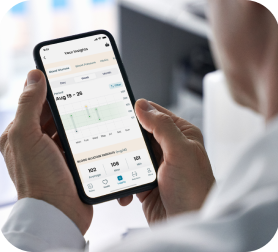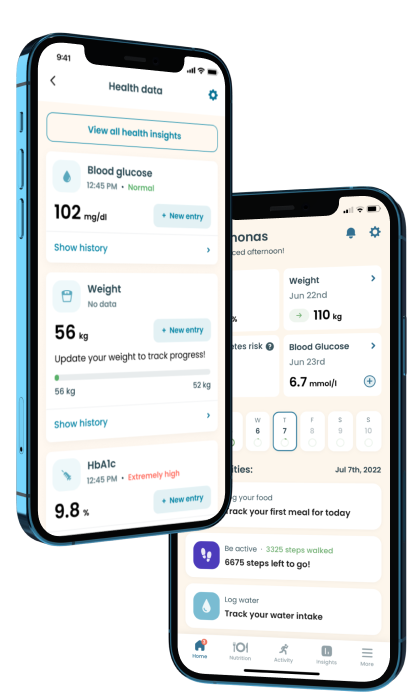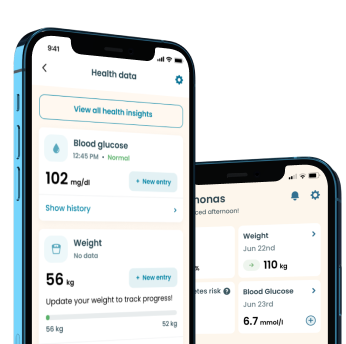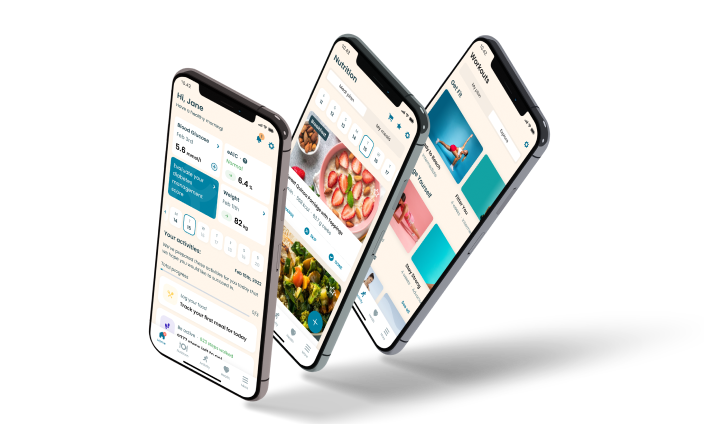Can You Eat Ice Cream When Having Diabetes?

It's ok
51
207 kcal
When it comes to food treats, it would be fair to say that there is nothing better than ice-cold ice cream on a blisteringly hot summer's day! Ice creams are one of the food world's greatest luxuries, but if you happen to be someone who has diabetes, then ice cream may not be something that you can consider on a regular basis.
Ice cream, of course, is something that has historically been linked with ingredients that have a high-fat content and lots of sugar, and these are two things that should be avoided in a diabetic diet as much as possible.
Can People With Diabetes Eat Ice Cream?
Nutritional value
- Protein 3.5 g
- Carbohydrate 23.6 g
- Fat 11 g
- Fiber 0.7 g
- Sugar 21.22 g
- Cholesterol 44 g
Can People With Diabetes Eat Ice Cream?
There is some good news. Despite what some old-fashioned views might suggest, there are plenty of ways that you can include eating ice cream in a diabetic diet without having to worry too much about your blood sugar.
Of course, the trick with any sensible low sugar diet is always to control your portion size, always enjoy in moderation, and always read the nutrition facts label to make sure that things like your net carbs are within limits, you aren't ingesting a too high-calorie count and that your blood sugars are always at a healthy level.
There is absolutely no arguing that regular ice cream as a sweet treat can't compete with something like a salad when comparing the nutrition, but when you stick to a suitable portion and watch the levels of saturated fat, there is no reason that you can't eat your favorite dessert of chocolate ice cream from time to time.
With all of this in mind, let's look at the relationship between diabetes and ice cream and highlight how most ice cream can still be enjoyed in a diabetic meal plan. Even the American Diabetes Association would agree with what we have to say!
What Is Ice Cream?
Take a quiz
Discover what Klinio app can do for you
Healthy diabetes meal plan crafted just for YOU

Personalized workouts with no equipment needed

Track your progress with smart tracking tools

What Is Ice Cream?
Firstly, let's establish exactly what we are talking about when we say ice cream.
Most of us recognize ice cream as any cold, creamy, sweet dessert that can be scooped out of a container and placed in a bowl or cone to be enjoyed, but there are a few standards that a product has to meet to be labeled as authentic, regular ice cream.
It needs to contain a minimum of 10% dairy milk fat.
It needs no more than 100% overrun and should weigh no less than 4.5 lbs per gallon of product.
Overrun is the term for the amount of air that is whipped in the ice cream during the freezing process. If ice cream has low overrun, then it will be dense and heavy, and something with high overrun will be light and airy.
"Pretend" Ice Cream
Those who eat ice cream regularly will notice that the ice cream flavors and brands that have high overrun are usually cleverly labeled as something like 'frozen dessert' or 'frozen treat,' and this is because they are not technically ice cream brands.
Other popular marketing terms for these frozen yogurt-leaning ice creams include reduced fat ice cream, low-fat ice cream, fat-free ice cream, light ice cream, and similar.
The amount of dairy in "real" ice cream, as opposed to imitations, is the primary distinction.
The main ingredients in ice cream are milk, cream, and sugar. In premium ice cream, there is usually a higher cream content. The best ice cream will probably brag about how much cream it contains. In frozen yogurt and faux ice creams, there is a greater milk content or even items like reconstituted milk powder.
This means frozen yogurt and desserts have a lower fat content than regular ice cream and particularly premium ice cream.
Nutritional Notes About Ice Cream
Nutritional Notes About Ice Cream
You're now obviously forewarned that because of its ingredients, ice cream will have a calorie count sufficiently high for you to have to consider choices about how to include ice cream in your meal plan. A sweet treat is nice to eat, but not worth risking your blood sugar or increasing your risk of heart disease because you're eating too much-saturated fat.
Eat.com undertook a review of some of the country's favorite ice cream brands looking at the nutritional value of each. Based on brands that produce pint (roughly) containers of ice cream, the results are pretty scary!
Blue Bunny Peanut Butter Party
At the lower end of the scale of high-calorie ice creams, Blue Bunny Peanut Butter Party contains 750 calories. It provides 43g of fat (24g of which are saturated fats), 79g of carbohydrates, and 57g of sugar. It does also provide protein and fiber but not enough to offset the fat content.
You might have read that peanut butter in moderation is a good inclusion in a healthy diabetic diet. It is, but not when it is swirled into ice cream.
To put this into sharper focus, if you take peanut butter and mix it with chocolate ice cream, such as in the Haagen-Dazs' chocolate peanut butter ice cream, the calorie count jumps to 1,190 calories with 81g of fat (39g saturated fat).
But that is not the worst culprit. According to the review, Ben and Jerry's Peanut Butter Cup is the biggest calorie offender among US ice creams. One container of this sweet treat serves up a total of 1,400 calories with 98g of fat, 54g of which are saturated, worse still, 2g are trans fats.
Of the extensive list of ice creams examined, this one has the highest combination of calories, total fat, saturated fat, and sugar.
This pint has the largest combination of calories, total, and saturated fat, as well as sugar, of any of the brands incorporated on this list.
Clearly, this is not the best ice cream for diabetes. It also leads to the idea that you can avoid ice creams like this and find good alternatives. For example, the same review found that Chocolate Peanut Butter Ice Cream from Enlightened contains only 400 calories.
Tips for Choosing Ice Cream For People With Diabetes
Tips for Choosing Ice Cream For People With Diabetes
Now that you have read about what ice cream actually is and what it isn't, it is time to figure out a way for you to be able to enjoy things like chocolate ice cream and vanilla ice cream without having to worry too much about high fat and added sugar and the effect on your blood sugar and other health conditions associated with diabetes.
Here are some helpful tips and pieces of advice to keep in mind the next time you crave your own ice cream treat.
Check The Nutrition Facts Label
Always make sure to check the nutrition label when you are eating ice cream. You have to make sure that you match the serving size for the recommended intake, so you know precisely the nutrients you are ingesting. Measure out the recommended serving size into a small bowl rather than eating it straight out of the container because a half cup serving can very quickly turn into a half pint if you aren't careful!
All of the total carbs, protein, sugar added, total fat, and artificial sweeteners on the label will usually be for a half cup, so keep the rest of the tub off limits to make sure that you stay on track with your diabetes nutrition goals.
Choose Cold Churned Ice Cream When You Have The Option
When available in your chosen store, always go for an ice cream base that has a cold churned on the label. This means that it has gone through a process that results in a reduced fat ice cream that has a much smoother and creamier texture.
There are plenty of people with diabetes who would say that cold churned ice cream in moderation is the best ice cream experience you can have to satisfy your sweet tooth without being completely sugar-free.
Avoid Ice Creams That Are Mixed With Cookie Dough And Other Food Like Candy
Something that has become very common in the ice cream market over the last few years is for brands to bring out blends and flavors that combine different sweet treats to take the experience to new heights! There has been a massive proliferation in ice cream versions of best-selling and favorite candy bars, so the temptation is even greater.
Of course, the downside for people with diabetes is that things like cookie dough and candy mean a lot of added sugars, calories, and carbs for what is already a sugar-filled dessert.
To satisfy your sweet tooth without pushing your diabetic boundaries too far, it is best to stick to single flavor options like lite chocolate ice cream, lite vanilla ice cream or keto ice cream, and even gluten-free ice cream that doesn't have all of the added components to mess with your fat, sugar and carb intake and general nutrition levels.
By all means, push the boat out and treat yourself to a bit of mint chip or dark chocolate from time to time, but the more often you stick to brands and 'no fuss' flavors, the better it will be for your diabetes.
Always Remember To Count Your Carbs
Alongside sugar and fat, the other big consideration of ice cream is carbs. One 15-gram serving of chocolate flavor Rebel ice cream is equal to one dietary carb choice, so make sure to swap out other carbs in your day if you want to treat yourself to ice cream. The same can be said for brands like Blue Bunny, Breyers Smooth, and Marco Polo.
The general consensus with ice cream and diabetes is that as long as you keep track of the nutritional values and make allowances and swap for them in other areas of your diet, you can treat yourself with additional boosters of things like natural sweeteners, monk fruit extract, and tapioca syrup.
Swap Real Ice Cream For Other Frozen Treats
If you struggle not to eat real ice cream, then consider swapping out that problematic tub of premium chocolate ice cream for something that isn't going to be as damaging to your blood sugar if you end up overeating it.
There are many fat-free frozen yogurt options on supermarket shelves these days, which means it is simple to make a switch from ice cream to something that should satisfy that craving for something sweet.
Pick a Sorbet Instead of Ice Cream
This isn't a direct substitute for ice cream. A sorbet is a long way from vanilla ice cream and even further from cookie dough ice cream, but as a refreshing treat on a hot day, it's an ideal choice for anyone with diabetes.
Sorbets are not creamy, mainly because they do not contain dairy, nor try to imitate ice cream. A sorbet is essentially water ice. It is a frozen dessert made from sugar-sweetened water mixed with a flavoring - usually a fresh fruit in the form of juice, puree, wine, or a liqueur.
Although sugar-based, sorbets are much lower in calories and fat than ice cream
Have Granita Instead of Ice Cream
A granita is a form of sorbet. Unlike a sorbet blended to be smooth, a granita is crystalline in texture. Like sorbet, granita is a sugar-sweetened water base with added flavorings.
Although both sorbets and granitas are much lower in calories than ice cream and are low fat, you still need to check serving size because of the sugar content.
Make Your Own Ice Cream
Whenever you make your own version of something, you can control exactly what goes into it.
Sugar is an essential component of ice cream, so it is very difficult to cut it out of an ice cream recipe altogether, but if you look online, you will find quite a selection of recipes for low-sugar, diabetes-friendly ice creams.
One of the easiest ice creams you can make is banana ice cream. Simply cut some bananas into chunks and freeze them. When you want ice cream, take them out of the freezer and put them in a blender with a small amount of milk (it doesn't have to be cow's milk - any alternative milk will work) and mix until it's a nice, smooth, creamy texture.
The only sugar in this ice cream is the natural sugar in bananas and milk. There is no need for added sugar.
Check Your Blood Sugar Levels Regularly After Eating Ice Cream
When you think about it, the sugar in your ice cream isn't the only sugar you put into your body most days. An easy way to stay on top of your health and ensure that everything from sugar alcohols to carbs to the ice cream treat that you have doesn't impact too negatively on you is to always check your blood sugar levels about 1 to 2 hours after you have eaten it.

Download Klinio app!
Get more by downloading our free Klinio App. Analyze your health, form new habits and manage your diabetes anytime, anywhere.
OR
SCAN QR CODE



GET THE APP











